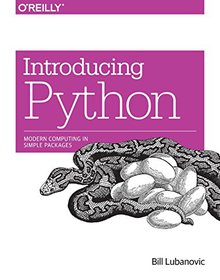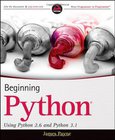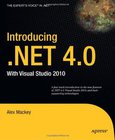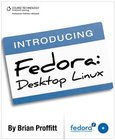Introducing Python
Modern Computing in Simple Packages

Book Details:
| Publisher: | O'Reilly Media |
| Series: | OReilly , Modern |
| Author: | Bill Lubanovic |
| Edition: | 1 |
| ISBN-10: | 1449359361 |
| ISBN-13: | 9781449359362 |
| Pages: | 478 |
| Published: | Dec 04 2014 |
| Posted: | May 31 2015 |
| Language: | English |
| Book format: | |
| Book size: | 8.17 MB |
Book Description:
Easy to understand and fun to read, Introducing Python is ideal for beginning programmers as well as those new to the language. Author Bill Lubanovic takes you from the basics to more involved and varied topics, mixing tutorials with cookbook-style code recipes to explain concepts in Python 3. End-of-chapter exercises help you practice what you've learned. You'll gain a strong foundation in the language, including best practices for testing, debugging, code reuse, and other development tips. This book also shows you how to use Python for applications in business, science, and the arts, using various Python tools and open source packages.Learn simple data types, and basic math and text operations. Use data-wrangling techniques with Python's built-in data structures. Explore Python code structure, including the use of functions. Write large programs in Python, with modules and packages. Dive into objects, classes, and other object-oriented features. Examine storage from flat files to relational databases and NoSQL. se Python to build web clients, servers, APIs, and services. Manage system tasks such as programs, processes, and threads. Understand the basics of concurrency and network programming.
Download Link:
Related Books:
Beginning Python
Using Python 2.6 and Python 3.1
Beginning Python: Using Python 2.6 and Python 3.1 introduces this open source, portable, interpreted, object-oriented programming language that combines remarkable power with clear syntax. This book enables you to quickly create robust, reliable, and reusable Python applications by teaching the basics so you can quickly develop Web and scientific applications, incorporate databases, and master systems tasks on various operating systems, including Linux, MAC OS, and Windows. You'll get a comprehensive tutorial that guides you from writing simple, basic Python scripts all the way through complex concepts, and also features a reference of the standard modules with examples illustrating how to implement features in the various modules. Plus, the book cov...
Introducing .NET 4.0
With Visual Studio 2010
Microsoft has introduced a large number of changes to the way that the .NET Framework operates. Familiar technologieshave being altered, best practices replaced, and developer methodologies adjusted. Many developers find it hard to keep up with the pace of change across .NET's ever-widening array of technologies. You may know what's happening in C#, but how about the Azure cloud? How is that going to affect your work? What are the limitations of the pLINQ syntax? What you need is a roadmap. A guide to help you see the innovations that matter and to give you a head start on the opportunities available in the new framework. Introducing .NET 4.0: with Visual Studio 2010 is designed to provide you with just that roadmap. It serves as a no-nonsense primer...
Introducing Fedora
Desktop Linux
Many people think of Fedora as an operating system that is way over their heads -- that only techies can use this strange, arcane OS with the odd name. Introducing Fedora: Desktop Linux is here to tell you that this is simply not the case. Fedora, and Linux in general, have become very easy for everyday home and business users to install and use. Now you can find out for yourself, in just one weekend, how easy it is to get started using Fedora and discover that there is life beyond Windows. Introducing Fedora: Desktop Linux is for anyone who wants to learn Fedora, specifically Fedora 13. Think of this book as a personal tutorial, a one-on-one class with an expert user of Fedora....
2007 - 2021 © eBooks-IT.org



